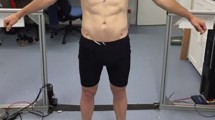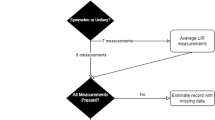Abstract.
The development of three dimensional laser scanning technology and sophisticated graphics editing software have allowed an alternative and potentially more accurate determination of body surface area (BSA). Raw whole-body scans of 641 adults (395 men and 246 women) were obtained from the anthropometric data base of the Civilian American and European Surface Anthropometry Resource project. Following surface restoration of the scans (i.e. patching and smoothing), BSA was calculated. A representative subset of the entire sample population involving 12 men and 12 women (G24) was selected for detailed measurements of hand surface area (SAhand) and ratios of surface area to volume (SA/VOL) of various body segments. Regression equations involving wrist circumference and arm length were used to predict SAhand of the remaining population. The overall [mean (SD)] of BSA were 2.03 (0.19) and 1.73 (0.19) m2 for men and women, respectively. Various prediction equations were tested and although most predicted the measured BSA reasonably closely, residual analysis revealed an overprediction with increasing body size in most cases. Separate non-linear regressions for each sex yielded the following best-fit equations (with root mean square errors of about 1.3%): BSA (cm<SUP>2</SUP>)=128.1·<I>m</I><SUP>0.44</SUP>·<I>h</I><SUP>0.60</SUP>for men and BSA=147.4·<I>m</I><SUP>0.47</SUP>·<I>h</I><SUP>0.55</SUP>for women, where m, body mass, is in kilograms and h, height, is in centimetres. The SA/VOL ratios of the various body segments were higher for the women compared to the men of G24, significantly for the head plus neck (by 7%), torso (19%), upper arms (15%), forearms (20%), hands (18%), and feet (11%). The SA/VOL for both sexes ranged from approximately 12·m–1 for the pelvic region to 104–123·m–1 for the hands, and shape differences were a factor for the torso and lower leg.
Similar content being viewed by others
Author information
Authors and Affiliations
Additional information
Electronic Publication
Rights and permissions
About this article
Cite this article
Tikuisis, .P., Meunier, .P. & Jubenville, .C. Human body surface area: measurement and prediction using three dimensional body scans. Eur J Appl Physiol 85, 264–271 (2001). https://doi.org/10.1007/s004210100484
Accepted:
Issue Date:
DOI: https://doi.org/10.1007/s004210100484




